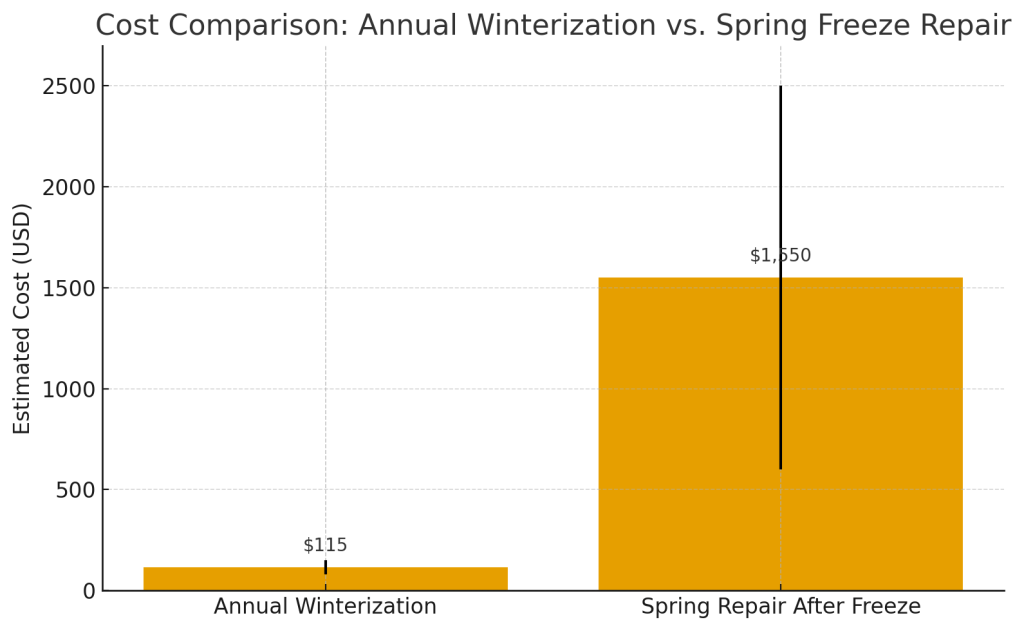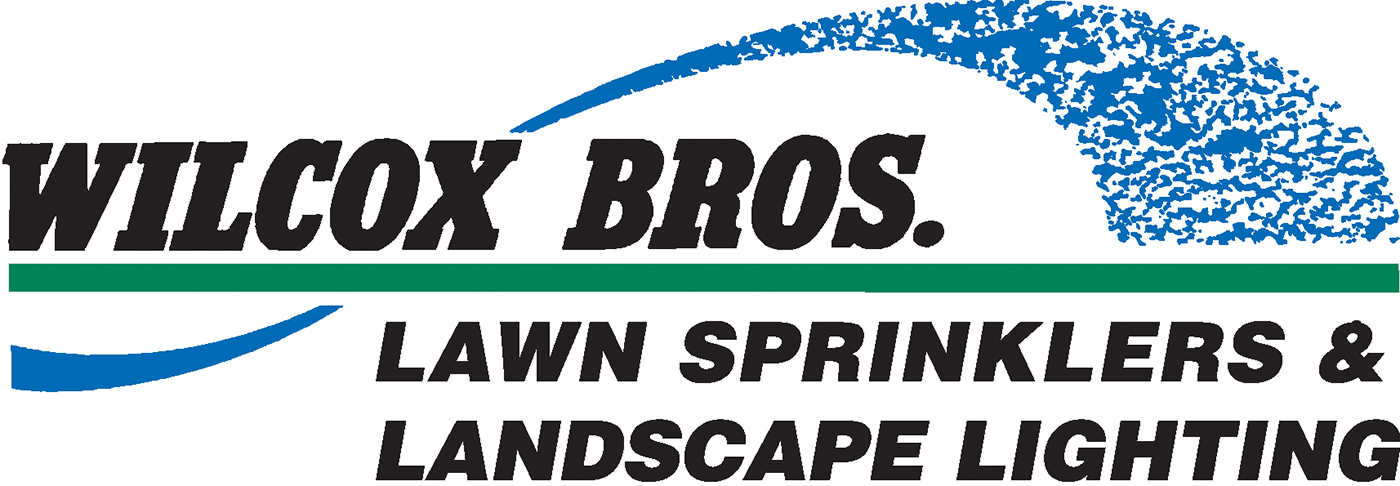Table of Contents
- Overview: What Is Sprinkler Winterization?
- Why It Matters: The Data on Freeze Damage
- Economic Impact of Skipping Winterization
- How the Blowout Process Works
- Pressure and PSI Guidelines
- Material and Design Factors That Affect Risk
- Long-Term Maintenance Data
- Key Takeaways
Overview: What Is Sprinkler Winterization?
Sprinkler winterization is the process of removing water from an irrigation system before freezing temperatures occur. When residual water remains in pipes, valves, or sprinkler heads, it can expand by approximately 9% upon freezing, exerting internal pressures exceeding 25,000 PSI—enough to crack PVC or poly piping.
The winterization process, typically performed using compressed air, ensures that no moisture remains inside the system, preventing freeze-related damage and extending the system’s lifespan.
Why It Matters: The Data on Freeze Damage
According to a 2024 analysis by the Irrigation Association and multiple state extension services:
- Up to 38% of irrigation system failures in northern U.S. states are related to freeze damage.
- Systems that are not winterized experience an average repair cost of $425–$1,200 per incident.
- Properly winterized systems reduce the risk of component failure by over 75% during spring startups.
- One cubic foot of frozen water can generate nearly 30,000 PSI of pressure inside sealed piping.
In Michigan and other northern regions, the average first freeze occurs between October 15 and November 5 (NOAA data), meaning that most irrigation systems should be shut down and winterized by early October to avoid damage.
Economic Impact of Skipping Winterization
Skipping a single winterization cycle can cost more than a decade of maintenance. Based on data from national irrigation service reports:
- Average annual winterization cost: $80–$150 per residential system
- Average cost of spring repairs after freeze damage: $600–$2,500
- Average lifespan of a winterized system: 15–20 years
- Average lifespan of a neglected system: 8–10 years
Financially, consistent winterization is one of the most cost-effective maintenance practices available for any irrigation system.

How the Blowout Process Works
The most common winterization technique is the “air blowout” method. It involves using compressed air to clear all water from pipes, valves, and heads. For commercial and residential systems, professionals typically use air compressors rated between 80–120 CFM at 50–80 PSI.
Steps in a Standard Blowout:
- Shut off the irrigation water supply.
- Attach the compressor to the blowout port or backflow preventer.
- Activate each zone sequentially until only air exits the sprinkler heads.
- Drain and isolate the backflow preventer.
- Set the controller to “off” or “rain mode.”
Proper PSI and sequencing are critical. Excessive pressure can cause valve diaphragm failure, while insufficient pressure may leave water trapped in low points of the piping network.
Pressure and PSI Guidelines
Different piping materials have different pressure tolerances when exposed to compressed air during winterization. Data from Rain Bird and Hunter Industries recommends the following:
| Pipe Material | Safe PSI for Blowout | Notes |
|---|---|---|
| PVC (Schedule 40) | 50–60 PSI | Exceeding 70 PSI can cause fittings to weaken. |
| Polyethylene (Poly Pipe) | 50–80 PSI | Flexible; slightly higher pressure acceptable for long runs. |
| Commercial Lateral Lines | 60–75 PSI | Monitor zone-by-zone; avoid sustained pressure over 90 seconds. |
Maintaining these guidelines ensures full evacuation of water without risking damage to the infrastructure itself.
Material and Design Factors That Affect Risk
Not all irrigation systems are equally vulnerable to freeze damage. Risk increases with certain design and material factors:
- Shallow trenching: Pipes installed less than 10 inches deep freeze faster.
- Improper slope: Trapped water pools at low points, increasing expansion pressure.
- Uninsulated backflow assemblies: Responsible for over 40% of winter freeze claims.
- Older PVC fittings: Lose tensile strength over time, making them more prone to cracking.
Design upgrades, such as using deeper trenches, insulated valves, or sloped drainage lines, can reduce winter-related damage by more than 50% according to data from irrigation design audits.
Long-Term Maintenance Data
Over time, consistent winterization and seasonal servicing dramatically extend the usable life of irrigation systems. Based on field data from maintenance contractors across the Midwest:
- Systems professionally winterized every year require 68% fewer repairs over a 10-year period.
- Winterization reduces average spring repair time by 40% due to fewer broken heads and valves.
- Systems that skip two or more winters in a row have a 90% chance of developing at least one underground leak.
Regular winterization isn’t just a seasonal precaution—it’s a long-term asset protection strategy supported by measurable data.
Key Takeaways
- Frozen water expands by up to 9%, creating pressures over 25,000 PSI that damage irrigation lines.
- Skipping winterization can reduce a system’s lifespan by half and increase repair costs fivefold.
- Proper air pressure (50–80 PSI) and sequencing are essential for safe blowouts.
- Annual winterization lowers repair frequency by roughly 70% compared to non-maintained systems.
- The average cost-to-benefit ratio of annual winterization exceeds 10:1 over the system’s lifetime.
For both residential and commercial landscapes, sprinkler winterization remains one of the most proven, data-backed maintenance steps available. Whether your system serves a small backyard or several acres of property, protecting it from freeze damage is an investment that pays off year after year.

